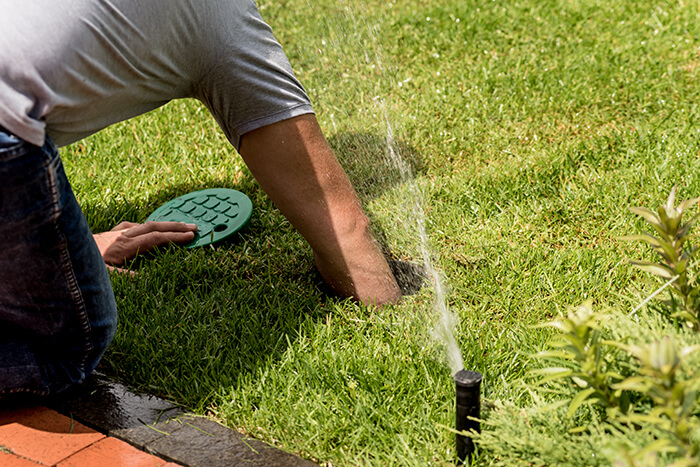Springtime means an awakening for all four-season landscapes.
One of the more important items on the to do list is the startup, inspection, repair and programming of the irrigation system. The best time to do this is after the grounds have received their spring cleanup which will reduce the chance of damage by the maintenance crews.
Regardless of the water source, contractors (or their service techs) and homeowners need to follow certain steps to ensure that the irrigation system will provide reliable season long operation.
For contractors
A visual inspection of the back flow device and the landscape itself should be done prior to supplying water to the system. Look for any ground disturbances that could indicate broken equipment or past leaks. Close any drain connections and test valves. Finally, orient the back flow ball valves so that the handles are parallel to the piping.


Inspect the controller and set the correct time and date. If needed, replace any batteries in the controller or wireless sensors. Next, activate the zone furthest from the point of connection. Locate the point of connection and slowly open the shut off valve about 10%. Listen as the water enters the system-Do not introduce the water all at once. Water has weight and pressure behind it and damage can occur if done too suddenly. Depending on the length of the mainline this could take from 30 seconds to an hour or more, the longer and larger the piping the more time required to fill. Walk along the run of mainline (and inspect any valve boxes) and watch for leaks that should be repaired before proceeding further. If no leaks are visible at this time slowly open the shut off valve a further 20%-30% and watch for the zone to be fully discharging water. When no more air is visible shut the zone down and fully open the shut off valve. When you hear the water completely stop flowing put your ear to the valve and turn the supply valve off. Turn the valve back on. if you hear water rush in it could portend a mainline leak or a faulty (weeping) solenoid valve. If a water meter is present, look for movement when the system is fully energized.

Next up is a zone-by-zone inspection. Activate each zone and check each head for direction and arc pattern. Look closely at the ground surrounding each head and check for both seal and fitting leaks. Clear away any mulch or turf that is covering the heads and adjust them as needed. Place a marker flag at any that need to be straightened, raised or replaced. Walk the areas between the heads and check for any lateral or mainline leaks. Consult with the property owner or property manager and inform them of the work currently necessary and propose any upgrades for the future. Inquire as to when the turf is cut so as not to water the area prior to grounds maintenance. When all is done devise a program based on soil texture, local evapotranspiration rates and zone precipitation rates or with inputs that a smart weather-based controller needs to provide the landscape the water it requires.
For homeowners
Follow the steps outlined above for contractors. Depending on your mechanical ability and knowledge of irrigation systems you may or may not be up to correctly performing all the necessary steps to activate your system.
Even if you have done all you can it never hurts to get a second opinion by hiring a certified contractor to go over your system. Not only will this validate your abilities, but you stand a good chance of learning that little extra step you didn’t think about.
To search for an Irrigation Association Certified Contractor in your area click here.
Always remember that a little knowledge from a professional will be worth every penny spent.





